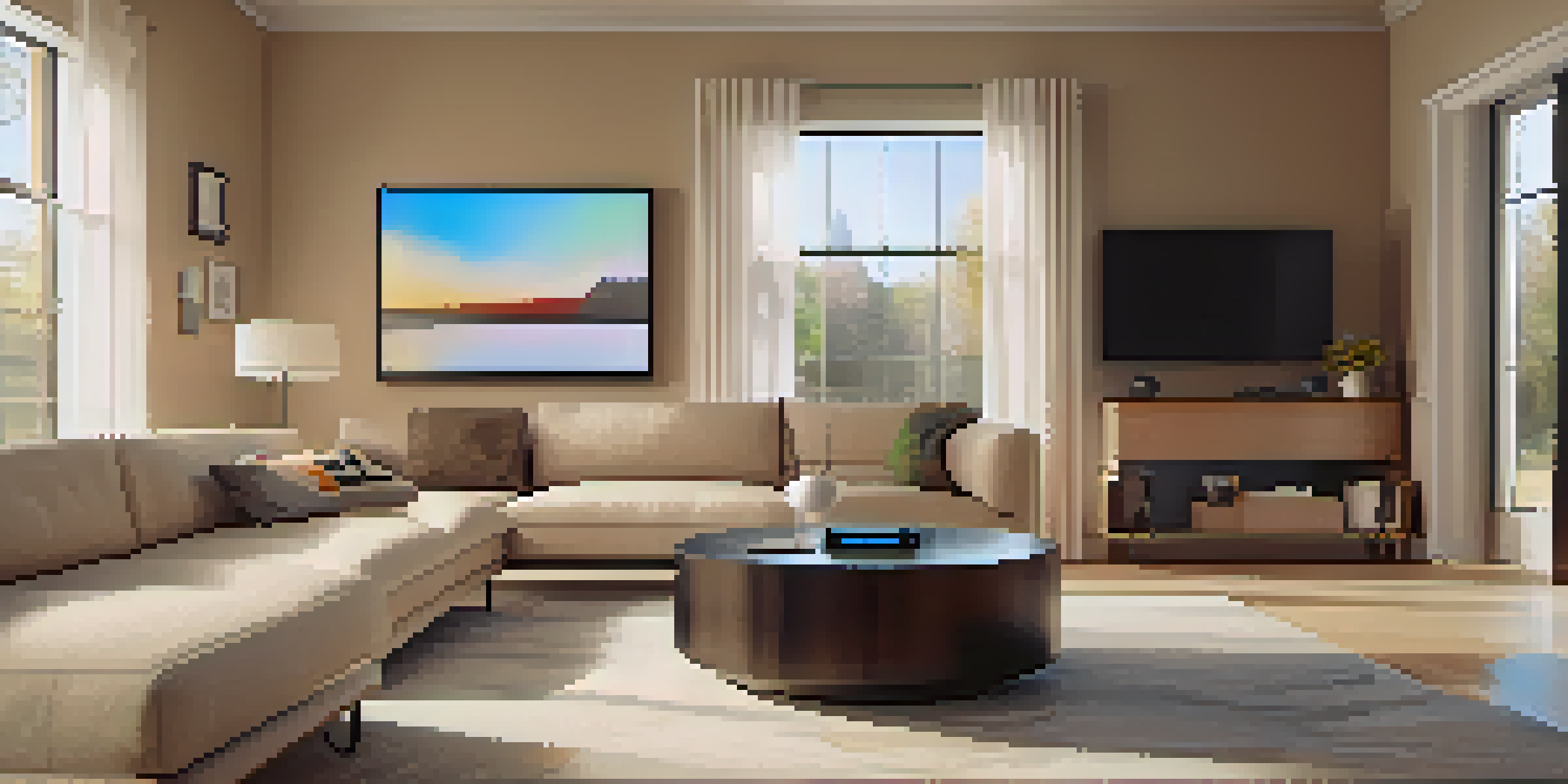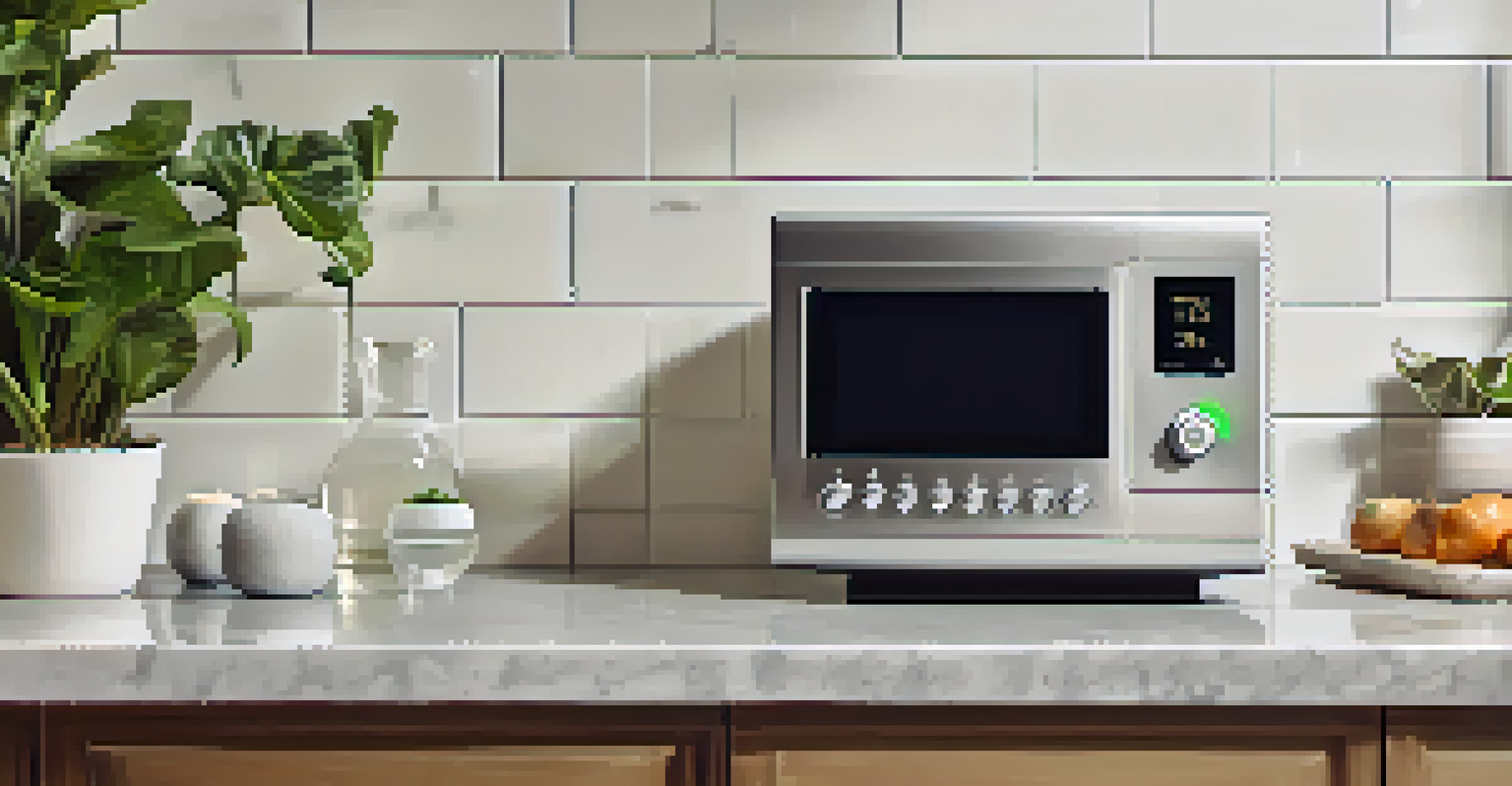Home Automation: Creating a Safer Living Environment

Understanding Home Automation and Its Benefits
Home automation refers to the technology that allows you to control home devices remotely. This can include everything from smart lights to security cameras, and it can make your daily life more convenient and secure. Imagine being able to lock your doors or adjust your thermostat from your smartphone, all while you're at work or on vacation.
The great thing about smart home technology is that it empowers you to manage your home in a way that fits your lifestyle and needs.
One of the key benefits of home automation is increased safety. With smart systems, you can monitor your home in real-time, receive alerts about unusual activities, and even simulate your presence at home when you’re away. This not only deters potential intruders but also gives you peace of mind, knowing you’re always connected to your home.
Additionally, home automation can integrate with existing safety devices like smoke detectors and carbon monoxide alarms. These devices can send alerts directly to your phone, ensuring that you're informed of potential dangers, even if you're not at home.
Smart Security Systems: Your First Line of Defense
Smart security systems are one of the most popular features of home automation. They can include doorbell cameras, motion sensors, and smart locks, all working together to keep your home secure. For instance, imagine receiving a notification on your phone every time someone approaches your front door, allowing you to see and speak to visitors remotely.

These systems can also provide 24/7 surveillance, with live feeds accessible from your smartphone. This means you can check in on your home anytime, whether you're at work or on vacation. The ability to monitor your property in real-time adds an extra layer of security that traditional systems can't match.
Home Automation Enhances Safety
Home automation allows you to monitor your home remotely, providing real-time alerts and enhancing overall security.
Moreover, many smart security systems can be programmed to send alerts for unusual activity. For example, if someone tries to tamper with your door, you'll receive an immediate notification, allowing you to take action quickly. This proactive approach to security can significantly reduce the risk of a break-in.
Automated Lighting: Deter Intruders with Smart Solutions
Automated lighting is another great feature of home automation that enhances safety. By programming your lights to turn on and off at specific times, you can create the illusion that someone is home, even when you're not. This simple trick can deter potential intruders who might be watching your house.
Safety is not just the absence of danger, but the presence of safety measures and smart systems that protect you.
In addition to deterring crime, smart lighting can also improve safety within your home. For instance, motion-activated lights can illuminate pathways and entryways when someone approaches, reducing the risk of accidents during the night. This is particularly useful for families with children or elderly members who may need extra visibility.
Furthermore, integrating smart lighting with other home automation systems can enhance functionality. For example, you can set your lights to turn on automatically when your smart lock is engaged, providing extra safety when you arrive home after dark.
Smart Thermostats: Enhancing Safety and Comfort
Smart thermostats are often overlooked in discussions about safety, but they play an important role in creating a secure living environment. They not only help you save on energy bills but can also alert you to potential issues, like unusual temperature changes that could indicate a fire or HVAC malfunction. Imagine receiving a notification on your phone if your home becomes too hot or too cold.
These devices can also be programmed to maintain optimal temperatures while you're home, ensuring comfort and reducing the risk of health issues related to extreme temperatures. For example, during a heatwave, a smart thermostat can automatically adjust to keep your home cool, safeguarding your family from heat-related illnesses.
Smart Devices Improve Emergency Response
Integrated smart systems can notify you of emergencies like fires or severe weather, helping you act quickly to protect your home.
Moreover, some smart thermostats can be integrated with smoke detectors, sending alerts if they detect smoke or fire. This means that not only will you be informed, but you can also act quickly to protect your home and loved ones.
Monitoring and Alerts: Staying Informed at All Times
One of the most significant advantages of home automation is the ability to receive real-time monitoring and alerts. Smart devices can notify you of unusual activity, whether it's a door left unlocked or a leak detected in your basement. This immediate information allows you to address potential issues before they escalate, ensuring your home remains safe.
For example, smart water sensors can alert you to leaks, helping prevent costly water damage and mold growth. With a quick notification, you can take action and mitigate damage before it becomes a significant problem.
Additionally, many home automation systems can send alerts directly to your smartphone or email, ensuring that you’re always in the loop. Whether you're at home or away, you can feel confident knowing that your smart home is looking out for you.
Emergency Preparedness: Smart Solutions for Peace of Mind
Home automation can also enhance your emergency preparedness. With systems that integrate into your smart home, you can receive alerts for severe weather or natural disasters, allowing you to take action quickly. For instance, a smart home can notify you of an impending storm so you can secure your property.
Moreover, smart smoke and carbon monoxide detectors can provide alerts directly to your phone. If a detector goes off, you can receive immediate notifications, giving you time to evacuate or take necessary precautions. This proactive approach to safety can save lives and protect your property.
Future of Home Automation is Bright
Advancements in technology will make smart home systems more intuitive and interconnected, further improving safety and efficiency.
Additionally, many smart home systems can provide guidance during emergencies, such as offering escape routes or contact information for local emergency services. This added layer of support can make a significant difference in high-stress situations.
The Future of Home Automation and Safety
As technology advances, the future of home automation looks promising, particularly in enhancing safety. With developments in artificial intelligence and machine learning, smart systems will become even more intuitive, learning your habits and preferences to better protect your home. Imagine a system that not only alerts you to unusual activity but can also predict potential risks based on your lifestyle.
Furthermore, as more devices become interconnected, the ability to create a seamless, smart environment will increase. For instance, imagine your security cameras, lighting, and thermostat working together to create a safety net that adapts to your needs. This interconnectedness can lead to a more comprehensive approach to home security.

Ultimately, the future of home automation will likely focus on making homes safer, more efficient, and more user-friendly. As we embrace this technology, we can create living environments that prioritize safety while enhancing our everyday lives.